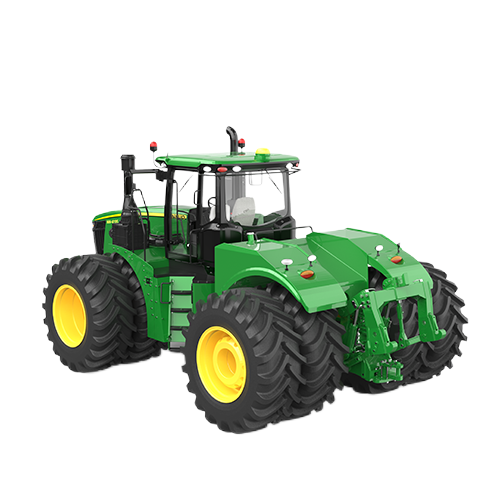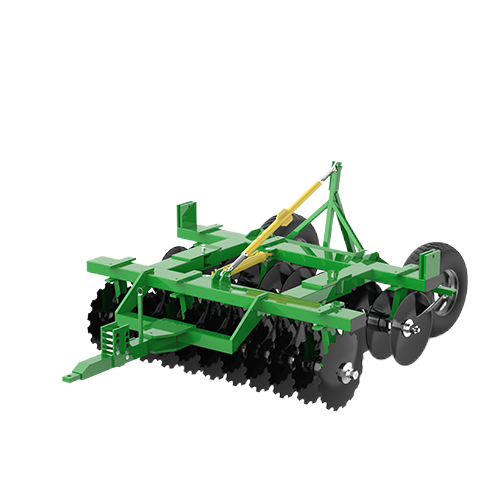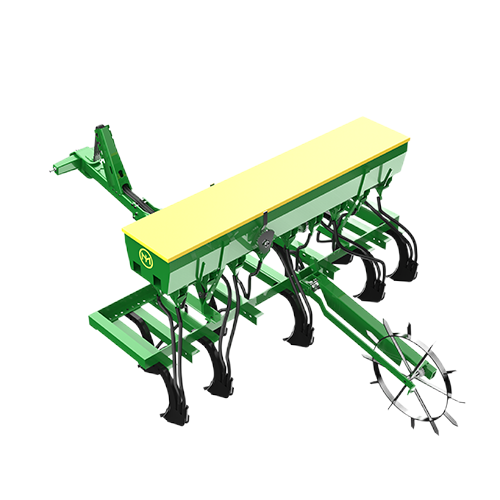The development of agricultural science and technology, so that more and more farm equipment began to replace manual labor, then there are many agricultural equipment in the agricultural equipment, you can distinguish what is the farm attachments what is the farm equipment?
This guide explores various types of farm equipment and attachments/implements, their specific uses, and how they enhance agricultural efficiency and productivity.
Contents
- 1 What is Farm Equipment
- 2 What is Attachments and Implements
- 3 Specific Uses of Farm Equipment
- 4 Specific Uses of Attachments/Implements
- 5 Differences Between Farm Equipment and Attachments/Implements
- 6 How to Choose the Right Farm Equipment
- 7 How to Choose the Right Attachments
- 8 How to Match Attachments with Farm Equipment
What is Farm Equipment
Farm equipment refers to large, often motorized machines used in agricultural operations. These machines are designed for specific tasks and are essential for modern farming. Understanding these machines and their functionalities is crucial for optimizing agricultural operations and increasing productivity.
Farm equipment includes tractors, harvesters, sprayers, planters, and other large machines.
Types of Farm Equipment:
- Tractors: Versatile machines used for pulling implements and powering various farm operations. Tractors are the most common piece of equipment on a farm and can be used for nearly all agricultural tasks.
- Harvesters: Machines like combine harvesters used to reap, thresh, and clean crops. They perform the harvesting process efficiently, reducing labor intensity.
- Sprayers: Used for applying pesticides and fertilizers, ensuring healthy crop growth.
- Seeders and Planters: Equipment for sowing seeds in the soil, ensuring even distribution and improved germination rates.
- Cultivators: Used to stir and pulverize the soil, preparing it for planting.
Various types of farm equipment
While farm equipment forms the backbone of agricultural operations, attachments and implements further enhance their functionality. These tools can make farm equipment more versatile, improving its efficiency and range of applications.

What is Attachments and Implements
Attachments and implements are tools that can be added to or used with farm equipment to perform specific tasks. They are crucial for maximizing the versatility of farm machinery. By choosing and using these attachments correctly, one can significantly improve the efficiency and effectiveness of agricultural operations.
Implements are tools attached to farm equipment to perform specific functions.
Types of Attachments/Implements:
- Plows: Used with tractors for soil preparation. Plows are implements that are pulled by tractors to work the soil.
- Harrows: Implements for breaking up and smoothing out the surface of the soil.
- Seed Drills: Used for planting seeds in precise rows.
- Mowers: Attachments for cutting grass or crops.
- Spreaders: Used for distributing fertilizers or seeds evenly.
- Loaders: Attachments for lifting and moving materials.
- Post Hole Diggers: Implements used for digging holes for posts.

Understanding the specific uses of farm equipment and attachments/implements is essential for optimizing agricultural operations. Detailed knowledge of each tool’s purpose can help you better select and use these tools to enhance agricultural productivity.
Specific Uses of Farm Equipment
Farm equipment is designed for specific tasks that are crucial for farming operations. Here are some key uses:
Tractors: The workhorse of the farm, used for pulling and powering various implements.
- Towing, plowing, tilling, planting, and hauling.
Harvesters: Essential for efficient crop harvesting.
- Reaping, threshing, and cleaning grain crops.
Sprayers: Application of chemicals for crop protection and fertilization.
- Spraying pesticides, herbicides, and fertilizers.
Seeders and Planters: Ensure accurate planting of seeds.
- Sowing seeds at the correct depth and spacing.
Cultivators: Used for secondary tillage to prepare seedbeds.
- Breaking up soil clumps and aerating the soil.
Attachments and implements add versatility and enhance the functionality of farm equipment by enabling additional tasks. Knowing the specific uses of these tools helps in better farm management and productivity.
Specific Uses of Attachments/Implements
Attachments and implements are specialized tools that extend the capabilities of farm equipment. Here are some examples:
Plows: Used with tractors for initial soil preparation.
- Creating furrows and preparing seedbeds.
Harrows: Smoothing and refining the soil surface after plowing.
- Breaking up clods and leveling the soil.
Seed Drills: Ensuring precise seed placement.
- Planting seeds in uniform rows and depths.
Mowers: Cutting grass and crops.
- Harvesting forage crops or maintaining pastures.
Spreaders: Even distribution of seeds and fertilizers.
- Applying fertilizers, lime, and seeds evenly.
Loaders: Moving materials around the farm.
- Lifting and transporting soil, hay, and other materials.
Post Hole Diggers: Digging holes for fence posts.
- Creating holes for installing fences and other structures.
Recognizing the differences between farm equipment and attachments/implements can significantly improve farm management and productivity. Understanding how to select and match these tools is crucial for optimizing agricultural operations.

Differences Between Farm Equipment and Attachments/Implements
Farm equipment refers to the primary machines used in agriculture, such as tractors and harvesters. Attachments/implements are additional tools that can be connected to this equipment, like plows or seeders, to perform specific tasks.
While farm equipment and attachments/implements are used together, they have distinct roles and characteristics. Understanding their differences helps in better management and utilization of these tools.
Farm Equipment:
- Definition: Large, motorized machines essential for primary farming operations.
- Functionality: Perform broad, essential tasks like plowing, harvesting, and towing.
Tractors, harvesters, sprayers, seeders.
Attachments/Implements:
- Definition: Tools added to farm equipment to perform specific tasks.
- Functionality: Enhance and extend the capabilities of farm equipment.
Plows, harrows, seed drills, mowers.
Selecting the right equipment and attachments is crucial for optimizing farm productivity. Here are some tips on how to purchase and match these tools effectively.
How to Choose the Right Farm Equipment
Selecting the right farm equipment involves considering various factors to meet the specific needs of your agricultural operations. Here are some key points to consider:
- Assessing Needs: Determine the tasks you need to perform and choose equipment accordingly. Understanding your farm’s specific needs is the first step in selecting the right farm equipment.
- Budget Considerations: Balance cost with functionality and quality. Budget constraints often play a decisive role but should not compromise quality.
- Brand and Quality: Choose reputable brands known for durability and reliability. The reputation and quality assurance of a brand are crucial for long-term investment.
- Compatibility: Ensure that the equipment can work with your existing attachments and implements.
- Maintenance and Support: Consider the availability of parts and service support. Choosing a supplier with good after-sales service is key.
Besides selecting the right farm equipment, choosing the appropriate attachments is also crucial for improving agricultural efficiency.
How to Choose the Right Attachments
Selecting the right farm attachments requires careful evaluation of agricultural needs and compatibility with existing equipment. Here are some tips for selecting farm attachments:
- Determine Needs: Clearly define the specific tasks you need to perform and select corresponding attachments.
- Check Compatibility: Ensure the attachments are compatible with your existing farm equipment.
- Quality and Durability: Choose durable and high-quality attachments to ensure long-term use.
- Brand Selection: Opt for reputable brands to ensure quality and performance.
- Budget Planning: Select cost-effective attachments within your budget.
After selecting the appropriate farm equipment and attachments, ensuring their compatibility and proper use is the next important task.
How to Match Attachments with Farm Equipment
Properly matching attachments with farm equipment is crucial for optimizing agricultural operations. Here are some tips for matching and using attachments:
Check Compatibility: Ensure that the attachments are compatible with the model and specifications of your farm equipment.
Proper Installation: Follow the manufacturer’s instructions for proper installation to ensure safety and efficiency.
Regular Maintenance: Regularly check and maintain the attachments to keep them in good working condition.
Training for Use: Ensure operators are trained to use the attachments correctly and safely.
By understanding and applying these tips, farmers can significantly enhance their farm’s productivity and efficiency.
Summary
In summary, understanding the difference between farm equipment and attachments/implements is essential for maximizing farm efficiency and productivity. While equipment like tractors and harvesters serve as the backbone of agricultural operations, attachments and implements such as plows, seeders, and harrows provide the versatility needed to tackle various tasks. By choosing the right combination of equipment and implements, farmers can enhance their farming practices and achieve better results.
Minnuo as a professional agricultural machinery manufacturer and supplier, we can provide high quality agricultural machinery, also has a large variety of agricultural machinery attachments, if you still have questions about the selection of the above, you can contact our sales, but also welcome you to visit our factory and guide!

